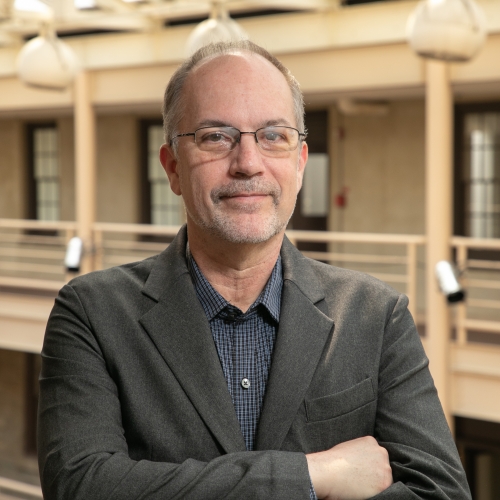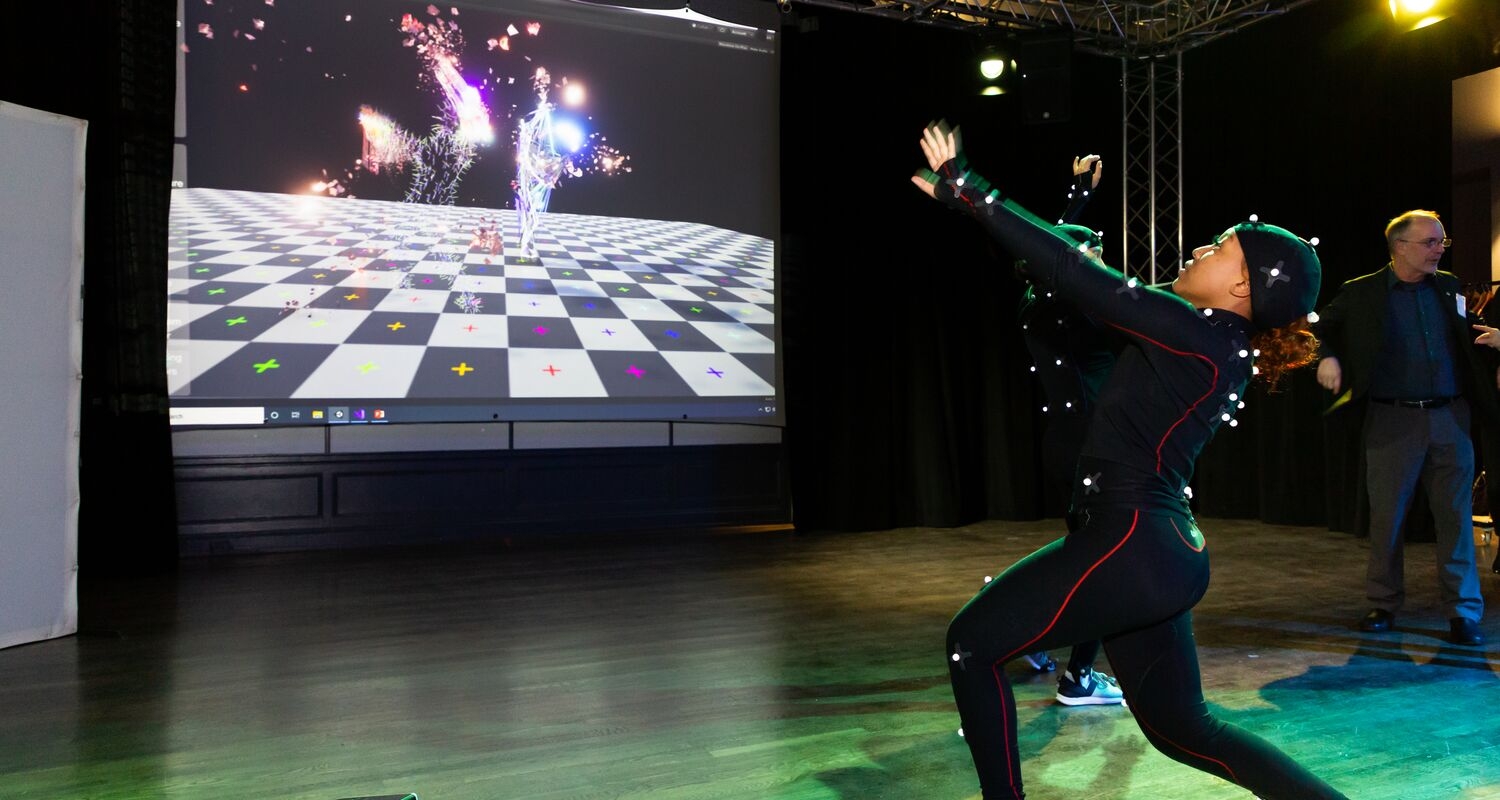
Center for Immersive Media
The Center for Immersive Media (CIM) at University of the Arts is a place where students and faculty can explore the opportunities and implications of what it means for ourselves to be immersed in data, simulations, stories, performances and digital communities.
This creative research facility is dedicated to the fields of virtual and mixed reality, performance motion-capture and human-computer interaction, through collaboration across visual and performing arts disciplines.
Research & Creative Activity


The Center for Immersive Media (CIM) at University of the Arts recently produced 360-degree documentation of the Carrie Mae Weems installation, Resist Covid Take 6!—currently on view throughout UArts’ Center City campus—that not only captures the artist’s work but also offers an immersive snapshot of the sights and sounds of Philadelphia amidst the ongoing pandemic.
Each of the components of Weems’ project brings awareness to the disproportionate, deadly impact of COVID-19 on Black, Latinx and Native American communities. This public campaign also emphasizes essential preventative steps including social distancing guidelines, evidenced by the allusion in the project’s title to the recommendation that people stay six feet apart. The works are intentionally installed on the exteriors of various venues where they can be safely viewed by the public.
To date, Resist Covid Take 6! has been hosted in a number of cities across the U.S., including Atlanta, Chicago, Dallas, Miami, Nashville, New York and Savannah. UArts is the exclusive presenter of this project in Philadelphia, generously supported by the Jessica Hamilton Hardy Visiting Artist Fund. The locations of the specific installations that comprise the Philadelphia iteration—which include elements such as large-format posters, video PSAs, posters and window banners—are indicated on an interactive map that CIM Director Alan Price created utilizing a combination of HTML5, JavaScript, and Google Maps API.
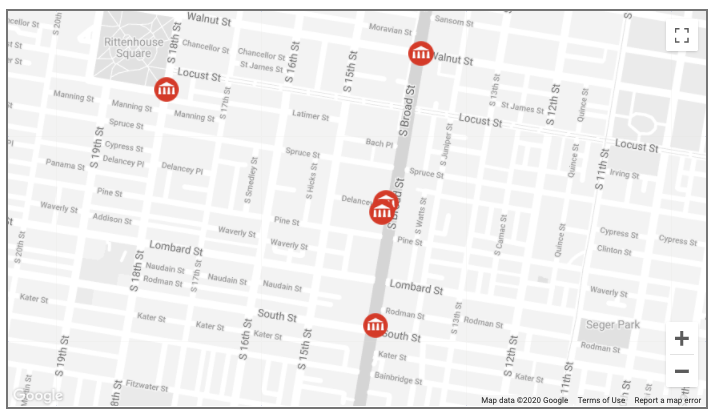
Click here to engage with the Resist Covid Take 6 interactive map and 360 virtual experience.
The map hosts panoramic video clips created at five installation sites using an Insta360 Pro VR camera. The camera creates a full, equirectangular projection image, stitched together from six integrated wide-angle lenses. The videos are compatible with many virtual reality (VR) viewers, including the Google Cardboard viewer, which allows anyone to utilize an Android or IOS device to experience this content in an even more dynamic way.
The video clips, including one documenting the installation at the Art Alliance, show passersby encountering the project as they journey through the city. The soundtrack of cars and buses rushing by paired with individuals engaging in routine activities like dog walking are not unexpected scenes to encounter in a typical city on a sunny afternoon; however, the appearance of masks worn by the majority of those on the streets serves as an indicator of the impact of the virus on everyday life.
According to Price, “The primary goal of documenting Resist Covid Take 6! with immersive media technology is to capture the experience of being there, in the public spaces in which each of the works are installed.” Regarding how this work ties into the larger mission of CIM, Price explains, “The Center for Immersive Media is a resource and creative research proving ground where anyone at UArts may discover ways that virtual and mixed reality, performance motion-capture and human-computer interaction can augment or facilitate the work that they do. This documentation project is just one example of potentially unique ways to document public works.”
CIM’s VR documentation is a fitting accompaniment to Resist Covid Take 6!. This way of interacting with the installations reinforces Weems’ message by making the project—and by extension, the city—accessible in a safe yet engaging way that brings new dimension to the virtual viewing experience.
Immerse yourself in the Resist Covid Take 6! 360-degree experience.


Spotlight: I want a Country

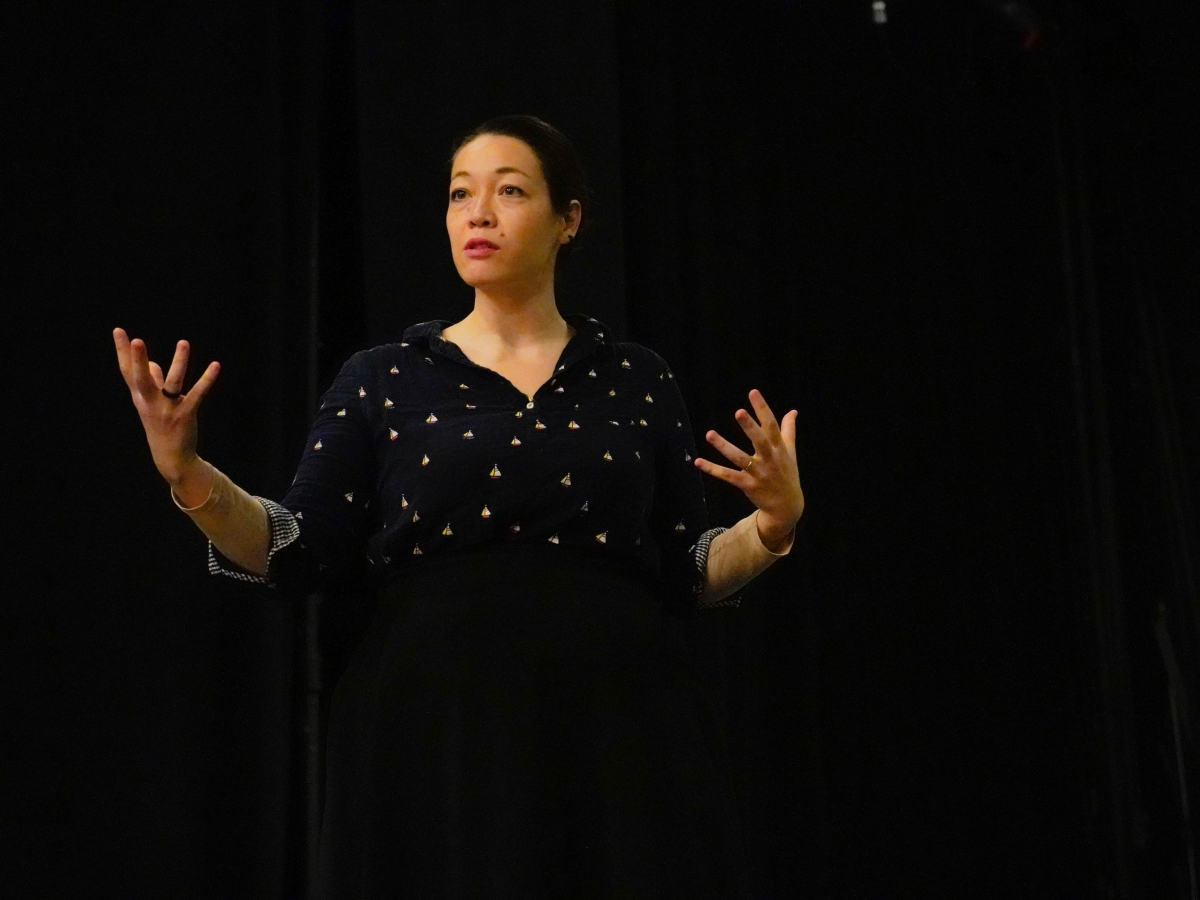
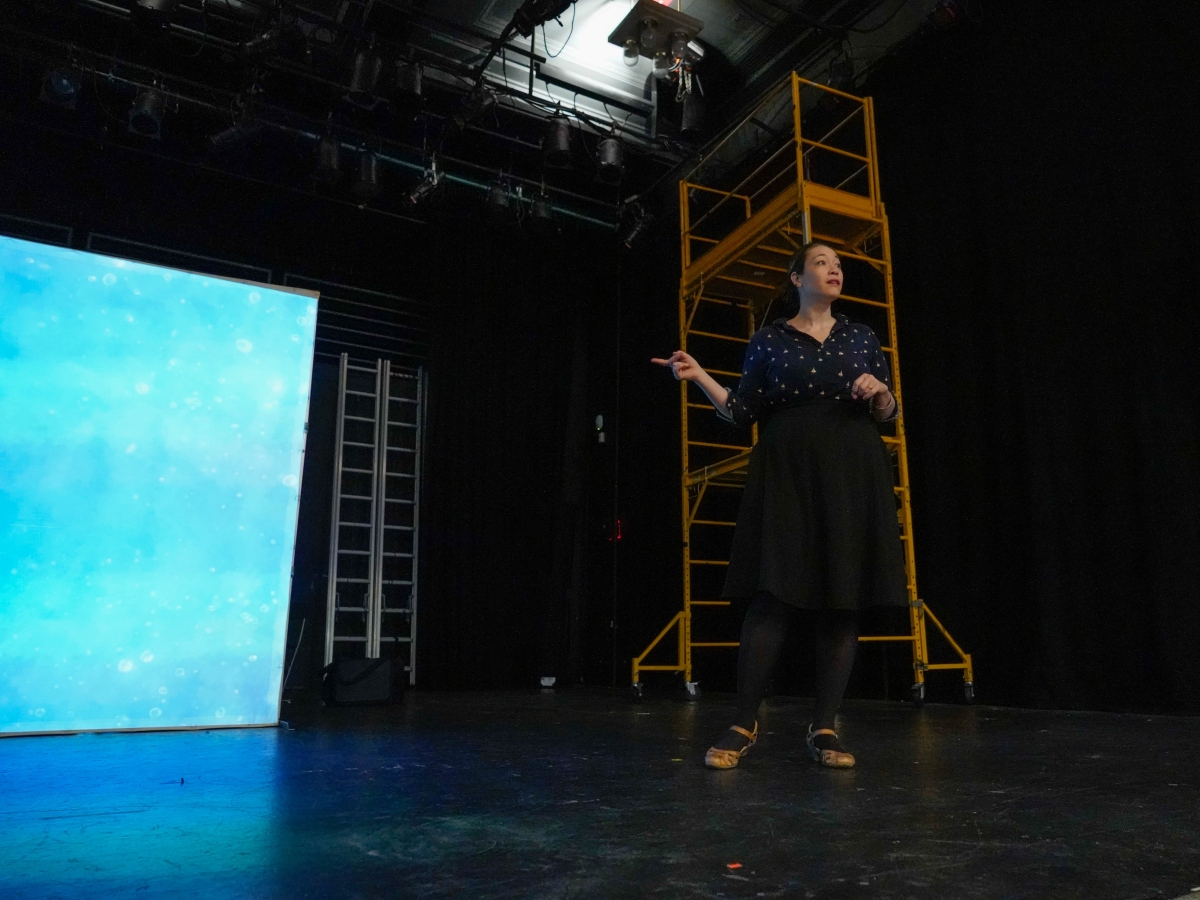
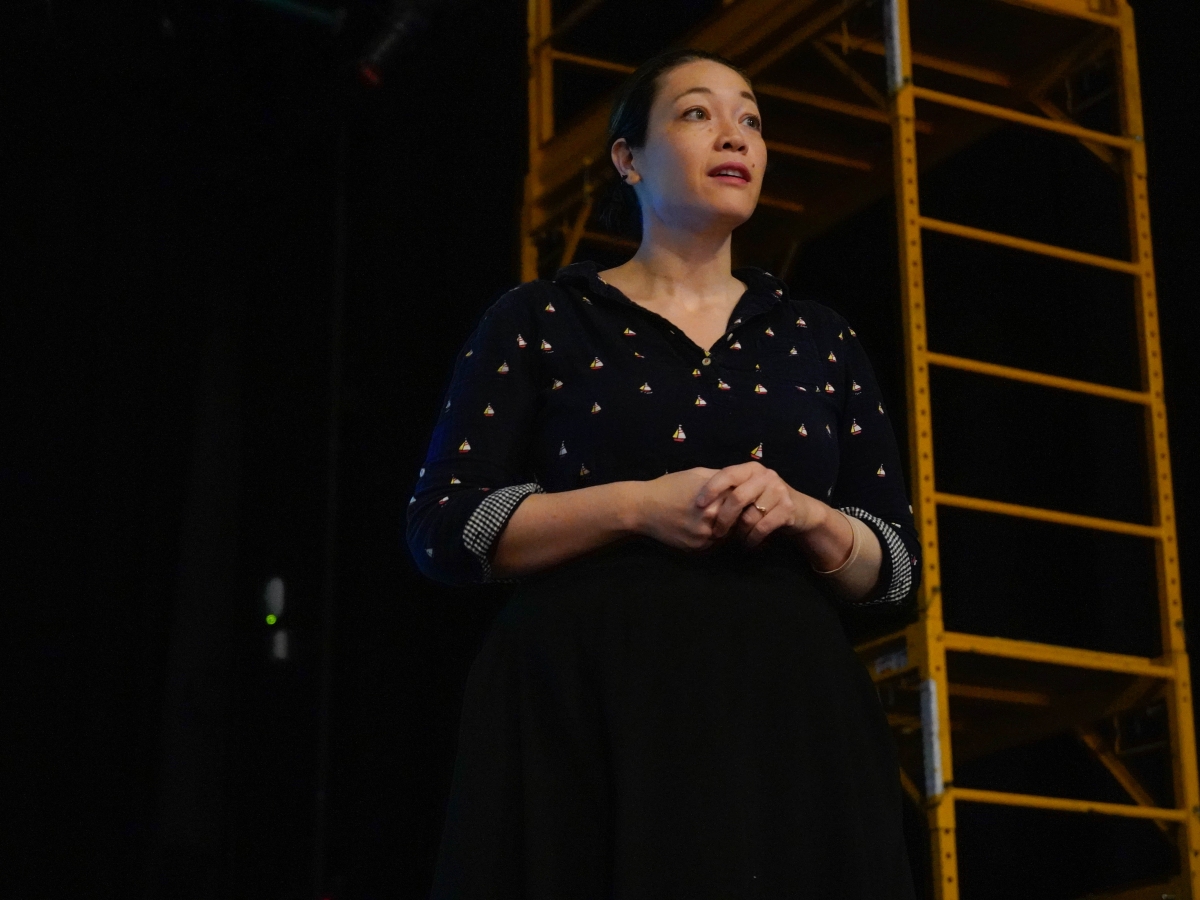
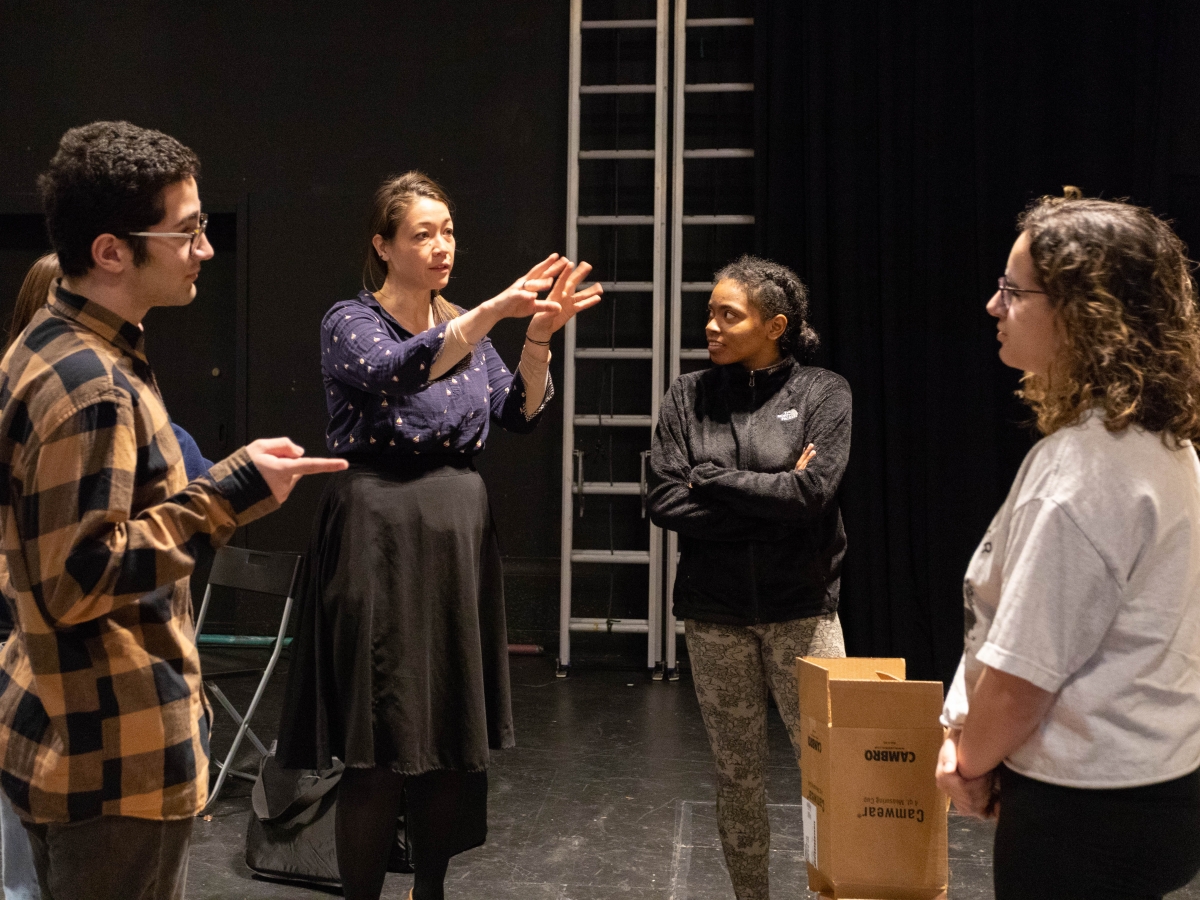
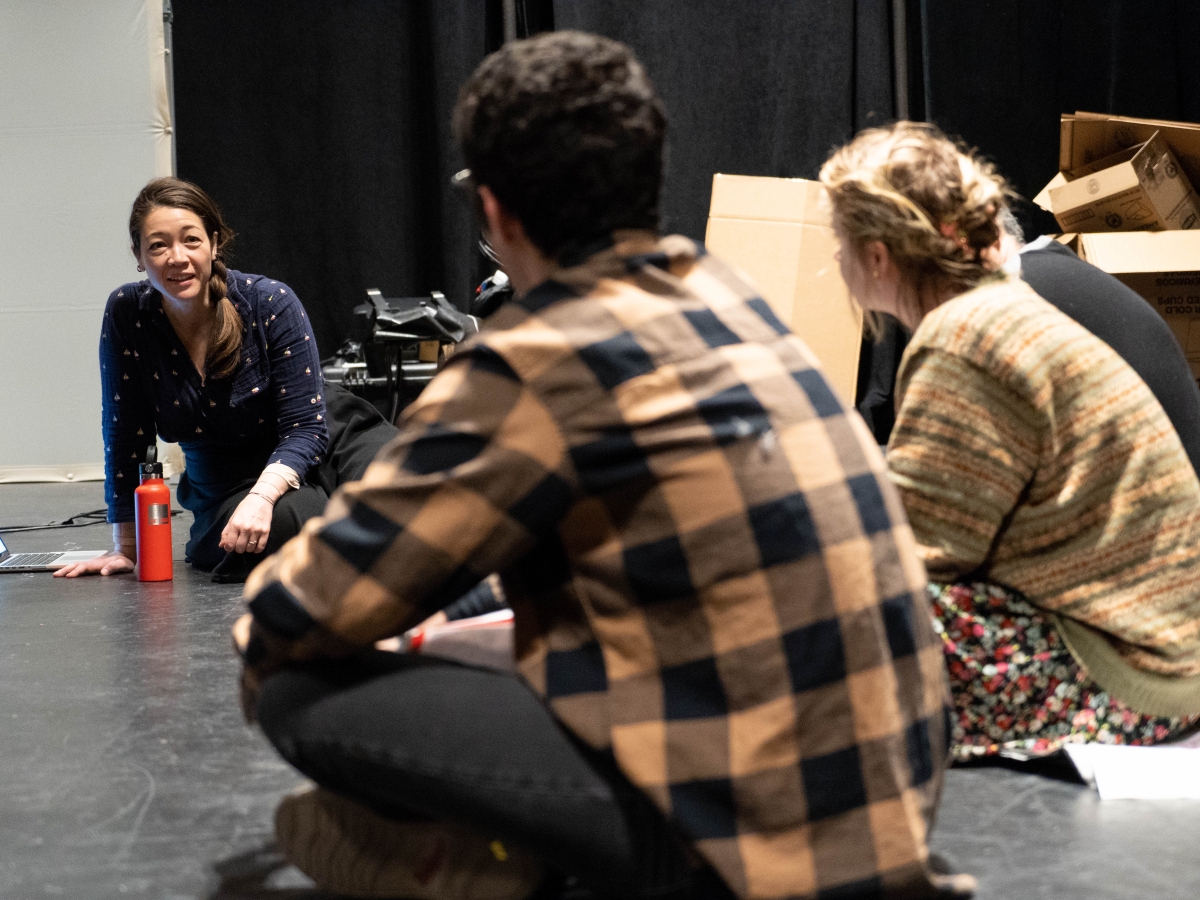
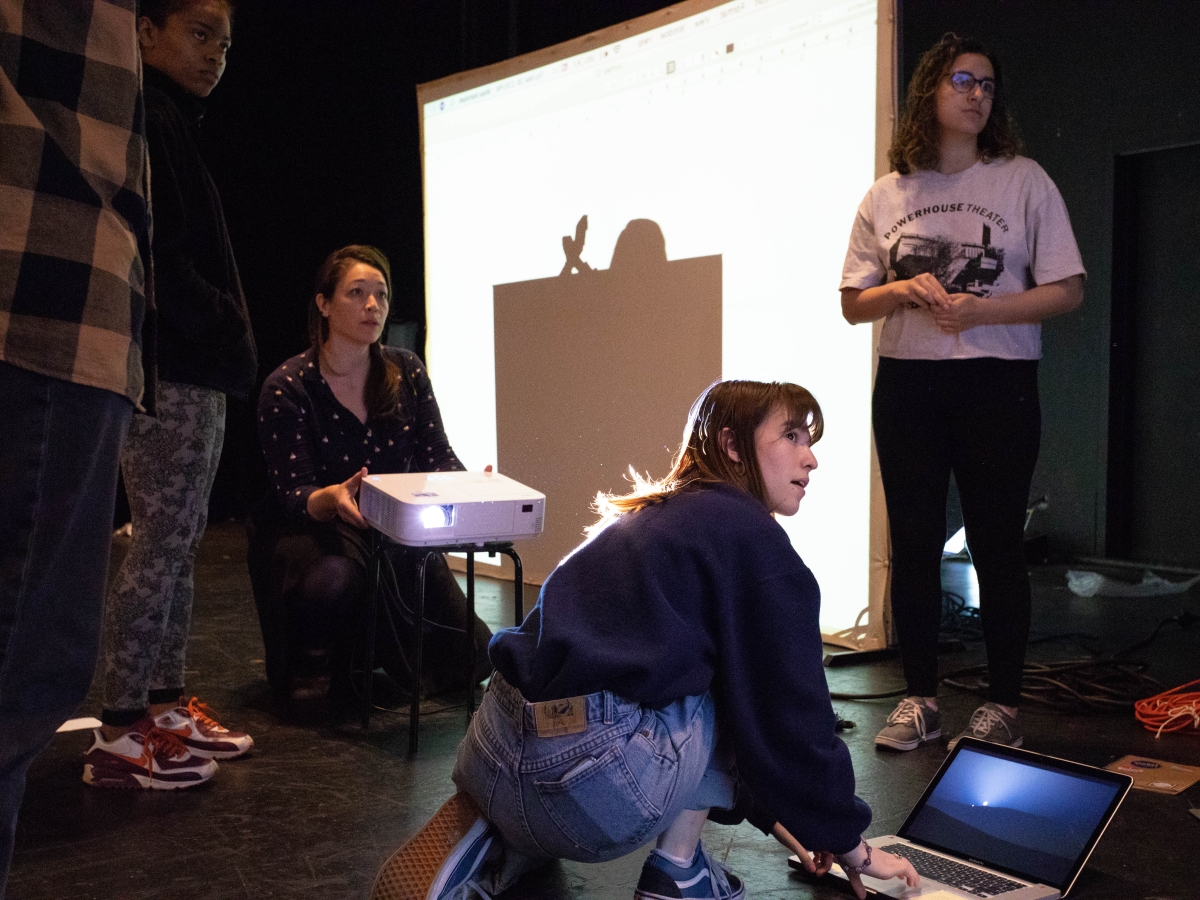
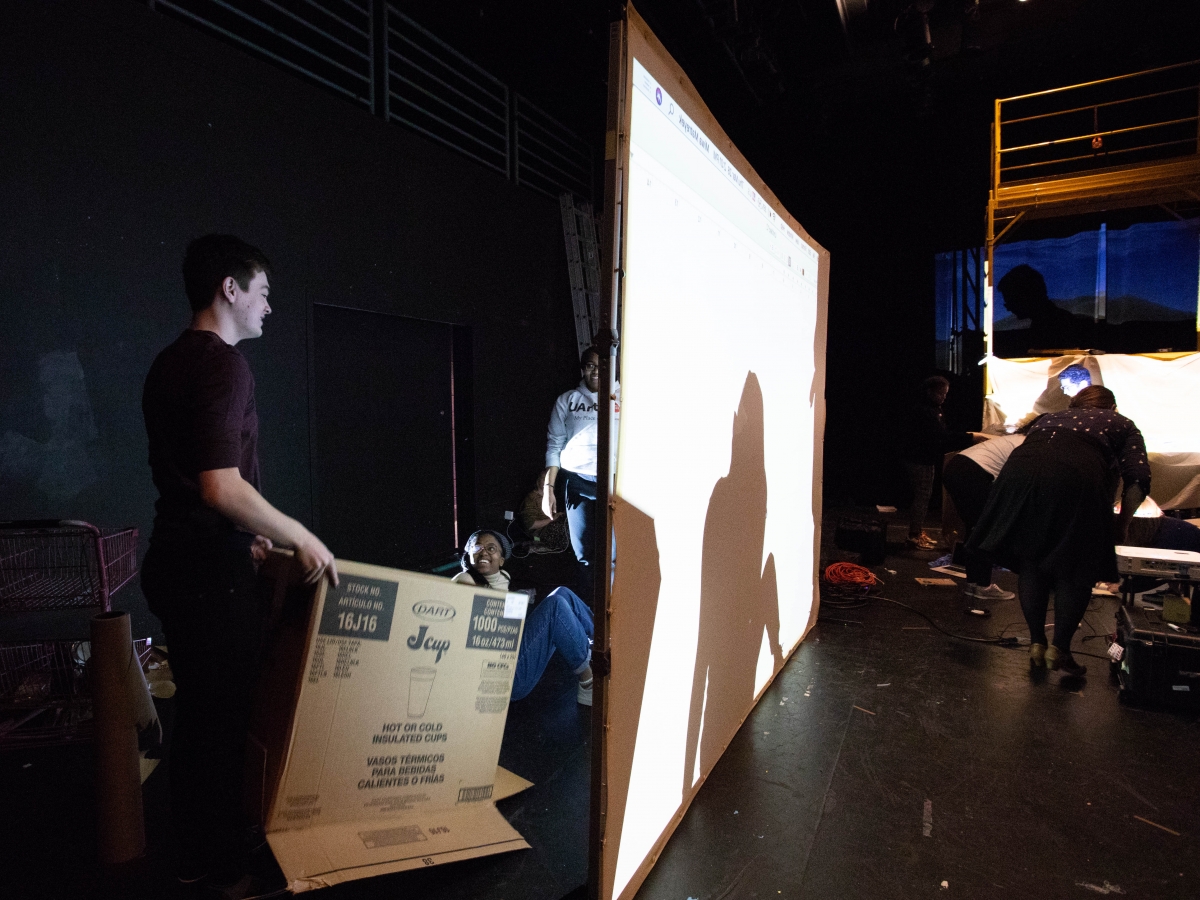
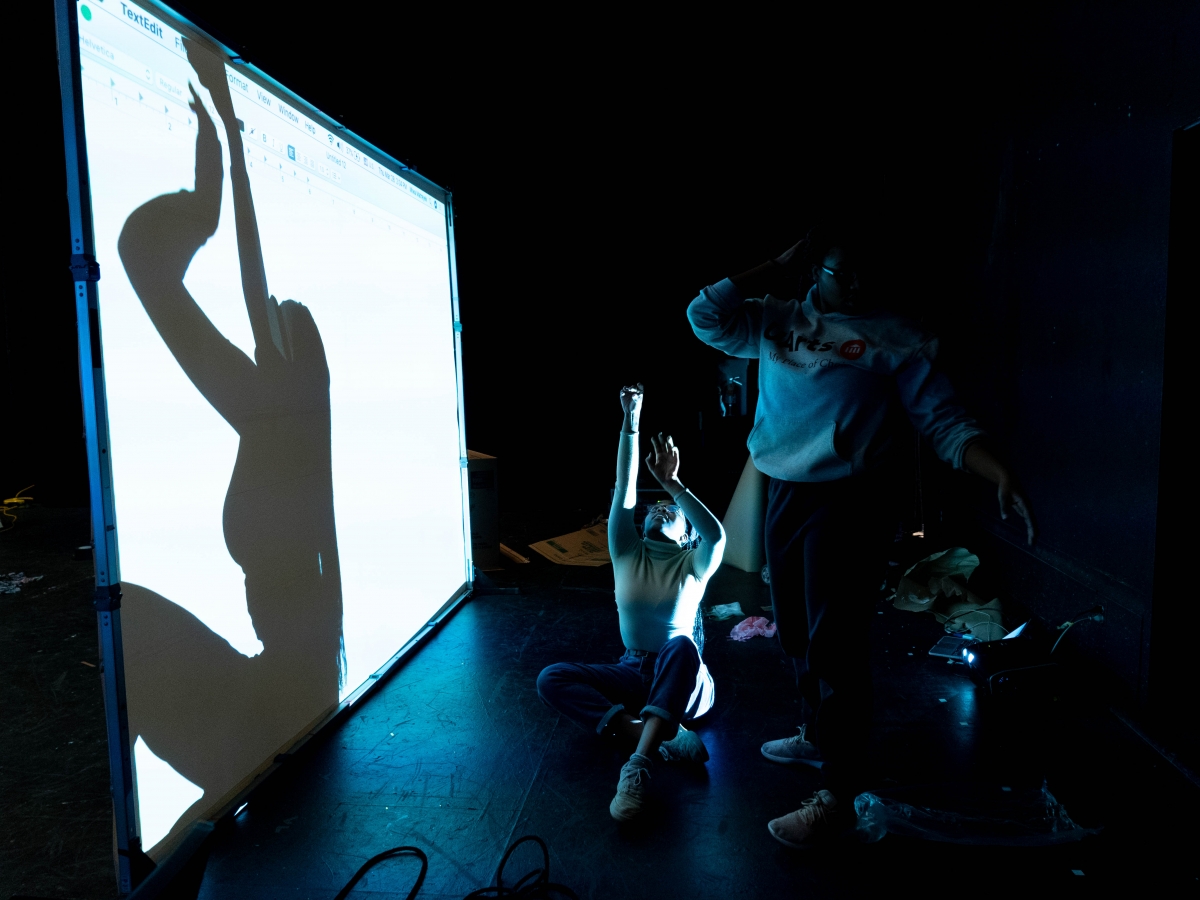
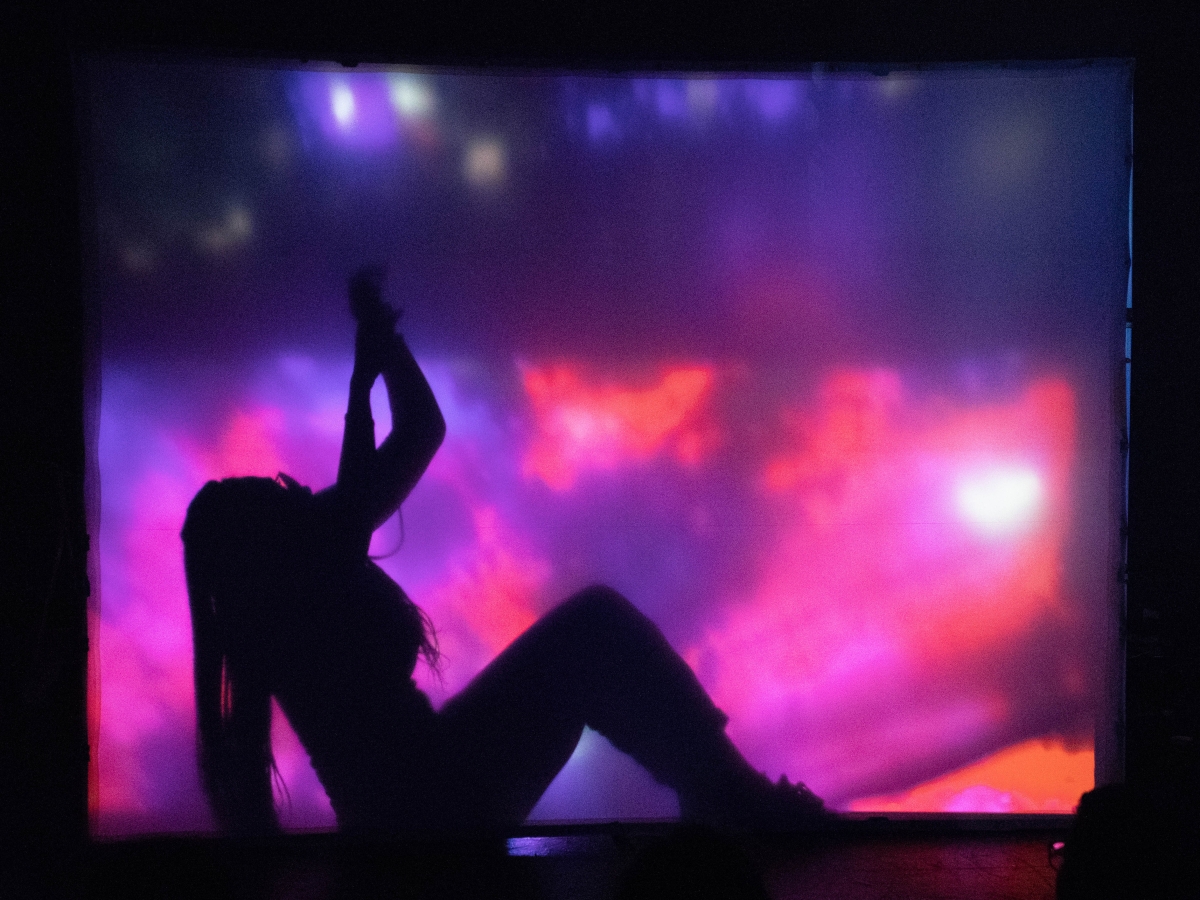
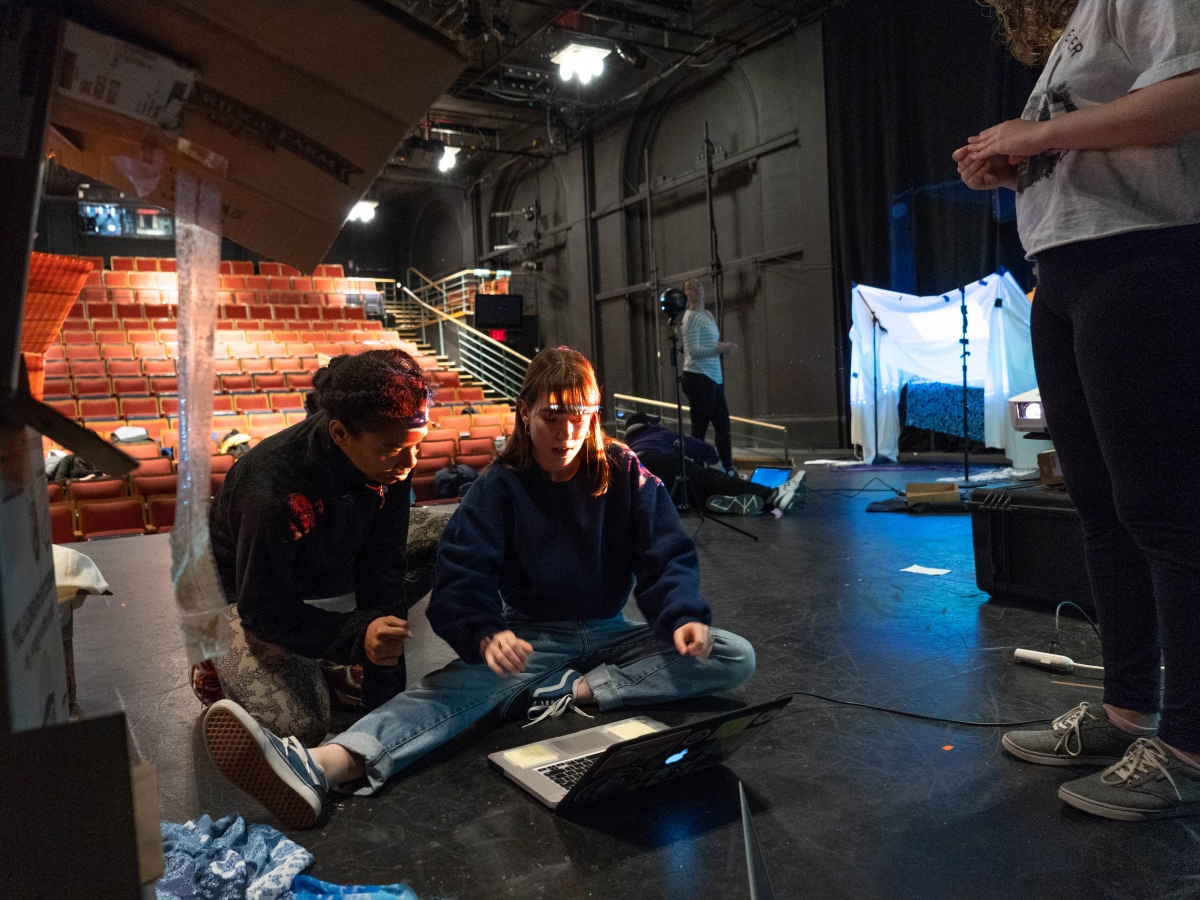
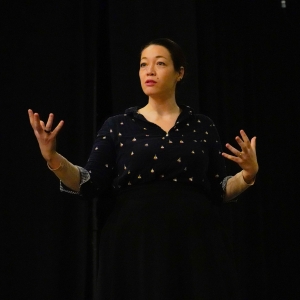
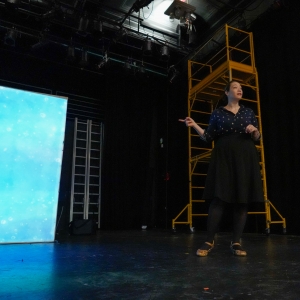
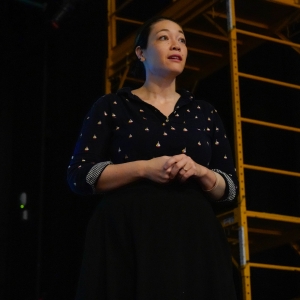
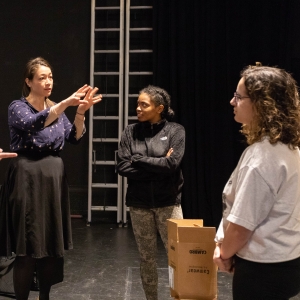
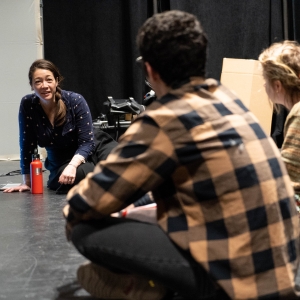
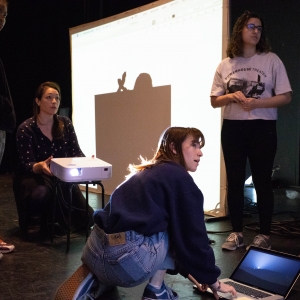
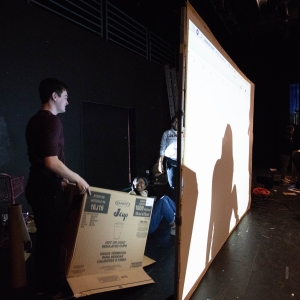
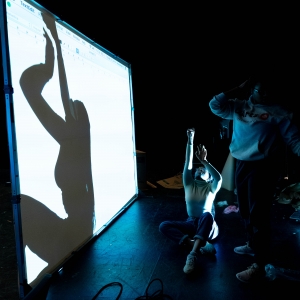
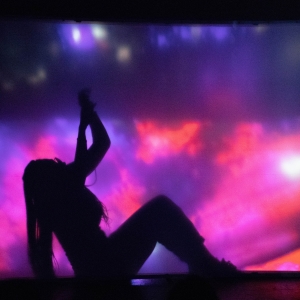
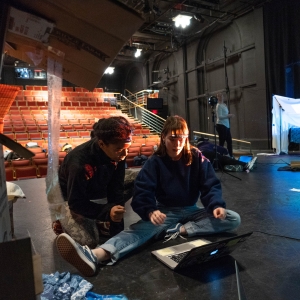
Otherworldly multimedia artist Miwa Matreyek brought her live performances, which combine her own shadow silhouette in interaction with her own animations, to University of the Arts March 27 and 28. She also led a masterclass, presented a demo and delivered an artist’s talk.
This World Made Itself—staged with Myth and Infrastructure in the Arts Bank the evening of March 27—is a visually and musically rich journey through the history of Earth, from the universe’s epic beginnings to the complex world of humanity. Matreyek’s animation is colorful and bright, and her performance evokes harmony with the natural world. She is excited by the various forms of new life emerging from Earth’s depths and the center of the universe. Point-of-view shots of feet walking on a beach immerses viewers in the scene, making them feel as compelled and exhilarated as she is. This connection makes the struggle between nature and humanity all the more haunting, as it destructively creeps its way into the performance later on...


Two storied Philadelphia universities—both renowned for heralding the transformative power of creativity—are partnering in order to reduce physician burnout in emergency medicine settings. The collaboration is supported by a grant awarded by the Emergency Medicine Foundation and HKS Architects. The purpose of this funding, as detailed on the HKS website, is to “help reimagine how emergency departments are designed by fostering innovation in an environment that has remained largely unchanged for decades.” This provides a unique opportunity for the University of the Arts to expand its work using immersive technology to explore the convergence of art, design and science.
Nearly 60% of emergency physicians report experiencing burnout which can result in chronic exhaustion, health deterioration from stress and the potential for compromised health care delivery to patients.
"Now more than ever, we must understand and redesign the human experience of frontline emergency rooms," said Stephen K. Klasko, MD, MBA, president of Thomas Jefferson University and CEO of Jefferson Health. "It's a brilliant opportunity to provide much-needed relief and benefit emergency staff and their patients."
The study is distinct in both its approach and its cross-disciplinary team. It will be anchored by Jefferson’s Health Design Lab and the Emergency Medicine department and University of the Arts’ new Center for Immersive Media (CIM), a 5,600-square-foot facility devoted to emerging and new technologies. The project will use high-fidelity virtual reality modeling, conducted at CIM, to analyze the environmental factors of the Emergency Medicine department at Thomas Jefferson University.
Environmental factors such as lighting, presence of windows, access to nature, aesthetics and imagery, ventilation, space, circulation and wayfinding, noise, and ergonomics have been proven to correlate with levels of stress, fatigue and low job satisfaction in other healthcare settings, but have not been explicitly studied within emergency room settings—in part due to the complexity of studying an active and highly trafficked emergency setting. Leveraging virtual reality will help the team study, and later manipulate, the emergency setting’s environmental factors without disrupting the life-saving activities of a currently operating academic emergency department.
“If you have ever been in a busy ER, or seen one on TV, it’s not surprising people working in them frequently burnout. There can be high stress, chaos, noise, crowded halls, poor lighting and a lack of windows or respite areas. In the current pandemic, the impact of poor ER design is felt even more by frontline workers,” says Dr. J. Matthew Fields, principal physician investigator and associate professor of emergency medicine at Thomas Jefferson University.
“For years, people and hospitals have tried to reduce physician burnout, but no one has really attempted to change the environment itself,” Dr. Fields continues. “That’s why we are teaming up with the UArts’ Center for Immersive Media to explore provider burnout in a completely novel way, through high fidelity virtual modeling of the ER space. The goal will be to pinpoint those areas in the environment that create the most stress and apply design thinking principles to reimagine and redesign them.”
Dr. Fields also notes that this novel and collaborative approach will help pave the way for improving healthcare spaces in ways that will benefit providers, staff and patients.
“This is an exciting collaboration in which we are leveraging VR technology for contributing to the effectiveness and well-being of dedicated healthcare providers whose work routines take place in a chaotic, 24/7 environment,” says Alan Price, director of the Center for Immersive Media at University of the Arts and principal design investigator for the study. “The sensory-rich experience of VR has the ability to elicit increased verbal, physical and emotional response to what physicians actually experience in emergency settings. Our VR simulation will allow doctors to ‘step out’ of the moment, and hopefully provide detail that would otherwise be difficult or impossible in the actual environment.”
The multidisciplinary team also includes architects of KieranTimberlake Architecture and health design psychologists of Thomas Jefferson University.
“Staff burnout is a significant issue across the healthcare system. Design can help mitigate stressful conditions and support staff wellbeing, which is critically important,” said Jason Schroer, AIA, principal and health practice leader at HKS. “We are honored to partner with EMF to research design’s potential to ameliorate caregiver burnout.”


Join Alan Price from the Center for Immersive Media for an 8-week program that will explore collaboration in virtual environments and ways that artists and designers are using Virtual Reality (VR) in studio practice.
Weekly sessions consist of demonstration and participation in VR chat rooms and multiplayer VR applications alongside discussions about the variety of approaches to making and designing in a virtual studio environment. This program is open to all UArts students.
For students who join the Cyber Studio, there will also be an opportunity to participate in a small VR production team. This will be a topic of discussion during the first meeting of the semester.
Spring 2021 Meeting time: Tuesdays, 4:00 p.m. EST beginning Jan. 26


Location: Center for Immersive Media, Juniper Hall
Date: Tuesday March 3, 1:30 p.m.
Location: Center for Immersive Media, Juniper Hall
The CIM Guest Artist Lecture Series is presented as part of Miwa Matreyek’s course, Projection, Body and Storytelling. All UArts faculty, staff and students are welcome to attend.
Nichole Canuso, artistic director of Nichole Canuso Dance Company and UArts faculty member, is interested in the stories we tell ourselves and the stories we tell other people. This artistic obsession manifests in performances that explore presence and absence, participation and spectacle. For the past two decades, Canuso’s choreographic projects have been presented nationally at New York Live Arts, New York City; American Repertory Theater, Cambridge, Massachusetts; Los Angeles Performance Projects, California; the International Festival for Art and Ideas, New Haven, Connecticut; and internationally in Hungary, Mexico, U.K. and other countries. Canuso has held numerous choreographic residencies, including at Maggie Allesee National Center for Choreography, Tallahassee, Florida; MacDowell Colony, Peterborough, New Hampshire; Millay Colony for the Arts, Austerlitz, New York; National Center for Choreography, Akron, Ohio; and other locations. Additionally, she is a 2017 Pew fellow.
Canuso has collaborated extensively with dance and theater companies, most notably with Headlong Dance Theater, where she was a company member for 12 years. Her work with Pig Iron Theatre Company includes the creation and performance of a three-woman clown play called FLOP. Other companies Canuso has worked with include Karen Bamonte Dance Works, Group Motion Dance Company, Big Mess Theater, the Arden Theatre, Theater Exile and the Philadelphia Shakespeare Festival. In 2008/2009, she worked with physical theater master Bill Irwin in The Happiness Lecture, which premiered at the Suzanne Roberts Theatre. Choreography for theater productions includes Arden Theater Company, Theatre Exile, Theater Horizon and most recently, the Institute on Disabilities’ production of A Fierce Kind of Love. When possible, Canuso teaches classes to the local dance community and has delivered master classes and commissions at Drexel University; Bryn Mawr College; University of Texas, Austin; AXIS Dance Company; and the American Philosophical Society Museum. She is currently a faculty member of the MFA program at University of the Arts / Pig Iron School for Advanced Performance Training.
The CIM Team
Students, Faculty & Collaborators
The Center for Immersive Media extends it's abilities by engaging and working with a wide range of collaborators. Partners both internal and external help us to produce engaging creative works and thoughtful research.
- Eden Blas
- Tyler Bell
- Rachael Domin
- Angel Hall
- Aspen Nell
- Kiara Koerper-Williams
- Nicole Diaz
- Sarina Eyring
- Monica Hill (mocap performer)
- Khamari Louissaint (mocap performer)
- Paul Schuette
- JP Beattie
- Jeffrey Devers-Green
- Fadi Skeiker
- Juan Parada
- Angela Riechers
- Stephanie Reyer
- Stacey Mann
- Chris McDonnel
- Erik Van Horn
- Charlie Heim
- Scott Coleman
- Jesse Zarrit
- Michael Ciervo
- Hailey Bryant
- Hsin Wan
- Franklyn Cantor
- Neil Kleinman
- Miwa Matreyek
- John Luna
- Trish Maunder
- David New
- Katherine Allen
- Bon Ku
- Matt Fields
Courses


Instructor: JohnPaul Beattie
Credits: 1.5 credits
A study of new techniques and technologies for composing immersive, spatial audio and music experiences. Designed to expose the student to new and cutting edge spatialization, including higher-order ambisonics, quadrophonic, surround sound, and binaural/transaural, through hands-on and project based recordings, installations, performance, or virtual environments.
See the course catalog for more information.


Instructor: Erik Van Horn
Credits: 3 credits
This class explores the range of Digital Content Creation (DCC) tools available to the artist in Virtual Reality. Utilizing current VR headset and interaction systems, we will survey digital sculpting, painting, design and animation apps in the service of personal expression and room-sized virtual art creation.
See the course catalog for more information.


Instructor: Paul Schuette
A soundscape, simply put, is an acoustic environment. Whether on a hike in the woods, waiting at the airport or listening to a piece of music, the soundscapes which surround us have an incredible impact on our lived experience of the world. Building on the work of R. Murray Schafer, this course will investigate the constantly evolving nature of soundscapes.
The study of soundscapes occupies “a middle ground between science, society and the arts” and is a relevant topic to multiple artistic practices including filmmaking, performance, theatrical design, game development, music and installation. Through creative projects, discussions, and lectures, this course will approach soundscapes from multiple perspectives: as a creative practice, as a design platform and as a field of research. Covering topics which range from neuroscience and auditory scene analysis to field recording and urban planning, this course covers a diverse array of artists and practitioners including Brian Eno, Maryanne Amacher, Alvin Lucier, Luc Ferrari and Richard Devine.
See the course catalog for more information.
FAQ
The CIM is not a degree program, and does not have a structured curriculum that provides the necessary foundations and skills to pursue a career or specialization. Immersive media, and specifically VR, is not a discipline in itself, but is a format, genre, or technology that can be applied in many different disciplines. If you are an aspiring designer, artist, choreographer, composer, or performer, UArts offers degree programs in which you can develop the expertise to be successful in those fields, and by incorporating opportunities that the CIM provides to everyone, you have the ability to include VR and immersive media in your creative toolset.
The easiest and most direct way is to take a course offered at the CIM. This can lead to opportunities including work-study positions and internships working on CIM projects sponsored by the university and through external grants and partnerships, and can help advance your professional experience. Advanced undergraduate and graduate students may submit proposals for independent or collaborative work fullfing your degree requirements. Ask your program director or faculty that you work with about integrating technology available at the CIM and how it can support your academic work.
CIM courses are open to students in any discipline without prerequisites; however, we recommend that you spend your freshman year studying in your degree program before taking a CIM course. This will allow you to connect to your creative practice, and to make sure that you find relevance to your work so that you can effectively explore and challenge the boundaries of your medium. Students should have a clear understanding of concepts and project ideas in order to take full advantage of opportunities available at the CIM.
Most courses are studios with students from a range of disciplines and interests. Courses typically meet in the computer lab at the CIM and explore new technologies requiring an aptitude for learning new software, hardware and techniques. Team projects in the courses can provide invaluable experience for collaborating with students in other disciplines. While you learn new technologies and concepts, you will be asked to explore how it relates to your chosen degree and disciplines of interest. See current and past course offerings.
Courses are taught by faculty and visiting artists who relate or connect their own artistic research and practice to immersive media. Topics and concepts are driven by interests that augment or explore boundaries of traditional or conventional practices. CIM courses are an opportunity for both students and faculty to explore new ways of thinking and making.
In general, the facilities are not available for individual or group performance or exhibition that is not a direct outcome of work developed at the CIM. As a research center, the facilities are dedicated to ongoing production. Public events occuring at the CIM are part of the center's programming and is curated to represent the mission and activities of the CIM, and opportunities to include work in events are through a process of calls for participation and invitation.
About
The mission of the center is to connect, engage and be a catalyst for creativity with
- faculty, through creative research, collaboration, teaching and grant partnerships.
- students, through learning, team projects and production internship experience.
- the professional community, through collaboration, projects and grant partnerships.
- research and development, through continuous adoption of, and training on, new technologies.
Immersive media not only refers to current trends in consumer-based virtual reality headsets and the history of immersive installations, but is also descriptive of our increasingly mediated society and lifestyles in entertainment, social interaction and professions. Designing for media experiences and consumption must accommodate increasingly mobile, integrated and networked systems.
The center is a place to explore opportunities and implications of what it means for ourselves to be immersed in data, simulations, stories, performances and digital communities.
Technologies that become more integrated with our senses, our bodies and identity must be humane, and artists, authors, composers and choreographers have creative and critical sensibilities that can anticipate and illuminate meaningful ways of engaging with emerging and future media technologies.
The 5,600-square-foot facility is dedicated to exploring the fields of virtual and mixed reality, performance motion-capture and human-computer interaction. The facilities include:
- 40' x 40' square, 14' high truss and open floor area, including:
- optical motion capture system for full body performance capture and location-based VR applications
- multiple video projectors
- lighting instruments with adjustable zoom and color
- four channel audio system
- station with control surfaces for all of the above
- blackout curtains surrounding the truss
- 16 station computing classroom with PCs optimized for real time computer graphics rendering.
- Two large project rooms with ceiling grids for development of installations and virtual environments.
Production equipment in the facilities will expand as the center takes shape, but currently includes:
- Large Scale LED Display approximately 16'x10' and accompanying video processing hardware.
- Multiple VR Head Mount Display systems (Vive Pro, Oculus Rift S, Quest, Go).
- Additional trackers for Vive Pro.
- Insta360 Camera capable of 360 degree VR video, stereoscopic and live streaming capabilities.
- Multiple short-throw and standard-throw video projectors.
Contact
310 S 13th Street
Philadelphia, PA 19107
The center is located in University of the Arts' Juniper Hall. The main entrance for guests is on the east side of the building through a small parking lot. Students and guests may also enter by way of the CIM classroom through the Juniper Hall residential lobby entrance.
Contact the Center for Immersive Media at cim@uarts.edu


